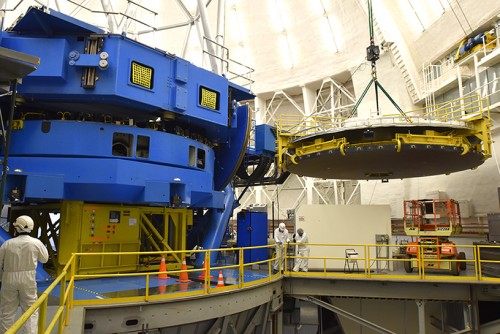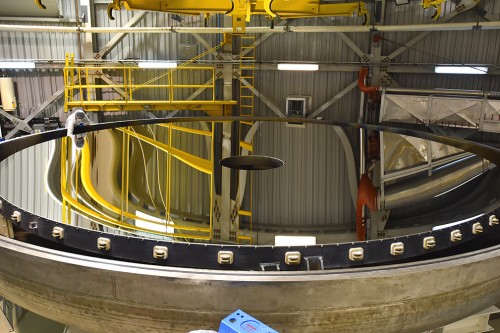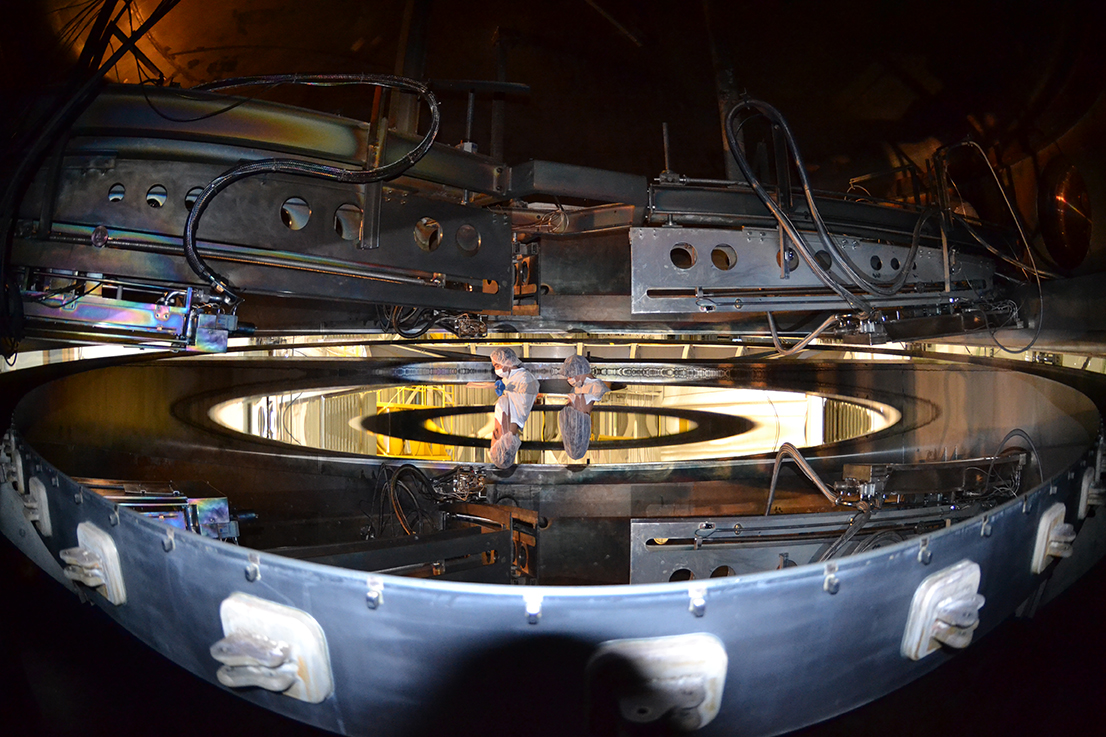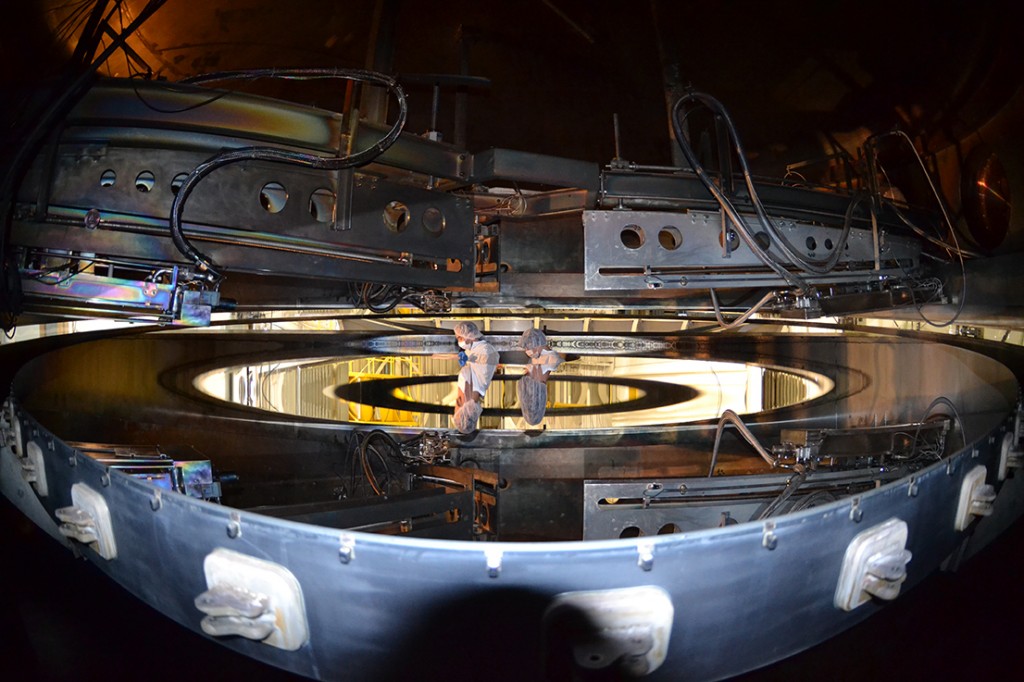- Date: 2 Nov 2015
- Comments: (0)
- Categories: For Astronomers, Operations News
The Gemini South telescope is back on the sky, after 18 days of hard work during the recent scheduled maintenance shutdown. During the shutdown, from October 13-30, the 8.1 meter primary mirror received a fresh multi-layer protected silvered coating – a key task for the shutdown.
The Gemini primary mirrors (north and south) are unique among large astronomical observatories because they are coated with a special 4-layer protected silver reflective surface – rather than aluminum, the usual coating used on large telescope mirrors. This gives Gemini an advantage in the mid-infrared region of the electromagnetic spectrum, allowing observations that are not possible with other ground-based telescopes.

The 8.1 meter primary mirror suspended on the 4th floor, before descending to the stripping/coating area on the first floor of the observatory building.
The re-coating process is a complicated process that requires complete attention by the entire engineering staff, and observations are not possible during this time, since major telescope systems require disassembly.
To take advantage of the shutdown period, the engineering team also performed a number of other concurrent maintenance tasks. These included work on critical systems such as the Acquisition and Guidance (A&G) unit; the Gemini Multi-Object Spectograph (GMOS); the mirror support system, and improvements on the secondary mirror’s cooling system.
Michiel Van Der Hoeven, Head of Engineering Operations at Gemini South, explains that one of the major milestones reached during this shutdown was to s0lve problems with the GMOS CCDs (Charged-Coupled-Devices). “Normally these kind of instrumentation maintenance stand-downs are done outside the telescope shutdown,” said Van Der Hoeven. “This time, to reduce the effect of taking our workhorse instrument off-sky, it was decided to form a dedicated team between Gemini South and Gemini North engineers to work on this during the shutdown.”
Who said it would be easy this time?
This year Chile was hit by several natural catastrophes that included major flooding in March, a huge snowfall in August, a major earthquake in September. In addition this shutdown was interrupted by unseasonal snowfall.
“It meant the planned work was interrupted twice, due to limited access to the summit. Once we reached the summit again, thanks to the dedication, commitment and availability of our staff for long working days and weekends, we still stayed within the original planning,” explained Van Der Hoeven.

The new reflective coating on the 8-meter Gemini South primary mirror is expected to last about five years with normal cleaning.
“Now, the mirror is installed back in the telescope and instruments are mounted and aligned with all systems checked and operational. Gemini South is ready for normal operations next week, with a shinny mirror that will continue to deliver outstanding images of our Universe,” concludes Van Der Hoeven.







